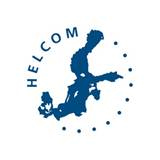
Regular aerial surveillance by HELCOM countries has helped reduce spills since 1980s
Flight hours dropped in detecting spills in the Baltic
08 April 2014
The new HELCOM report on illegal discharges in the Baltic Sea indicates a drop in flight hours, particularly in Sweden and Germany. Overall in 2013, the total hours of aerial surveillance in the HELCOM area sank by 15 % from 2012. A clear positive trend, for a number of years, is the decrease in both the size of observed mineral oil spills and the number of spills.
For better protection of the Baltic marine environment from pollution, every ship entering the area is urged to comply with anti-pollution regulations. The intensive aerial surveillance has helped, by its share, to reduce illegal spills significantly in the Baltic Sea (see figure below), despite the increasing traffic. To maintain the positive trend there is a need for adequate surveillance also in the future by all HELCOM countries.
In 2013, a total of 130 mineral oil spills were detected in the Baltic Sea during aerial surveillance and the total estimated volume of detected discharges was lower than ever, with 11 m3. In recent years, the number of observations of other harmful discharges than oil has increased; hence the specialized HELCOM Informal Working Group on Aerial Surveillance (IWGAS) has decided that observations of these substances will also be included in regular regional reporting, compiled by HELCOM.

Co-operation on aerial surveillance within the Baltic Sea area was established during the 1980s within the HELCOM framework. Through the Helsinki Convention (Article 14, Annex VII, Regulation 7) the Contracting Parties - the nine Baltic countries and the European Union - have agreed to develop and apply, individually or in co-operation, surveillance activities covering the Baltic Sea area in order to spot and monitor oil and other substances released into the sea. If possible, the identity of a polluter should be established and a spill sampled from both the sea surface and the suspected offender on board.



